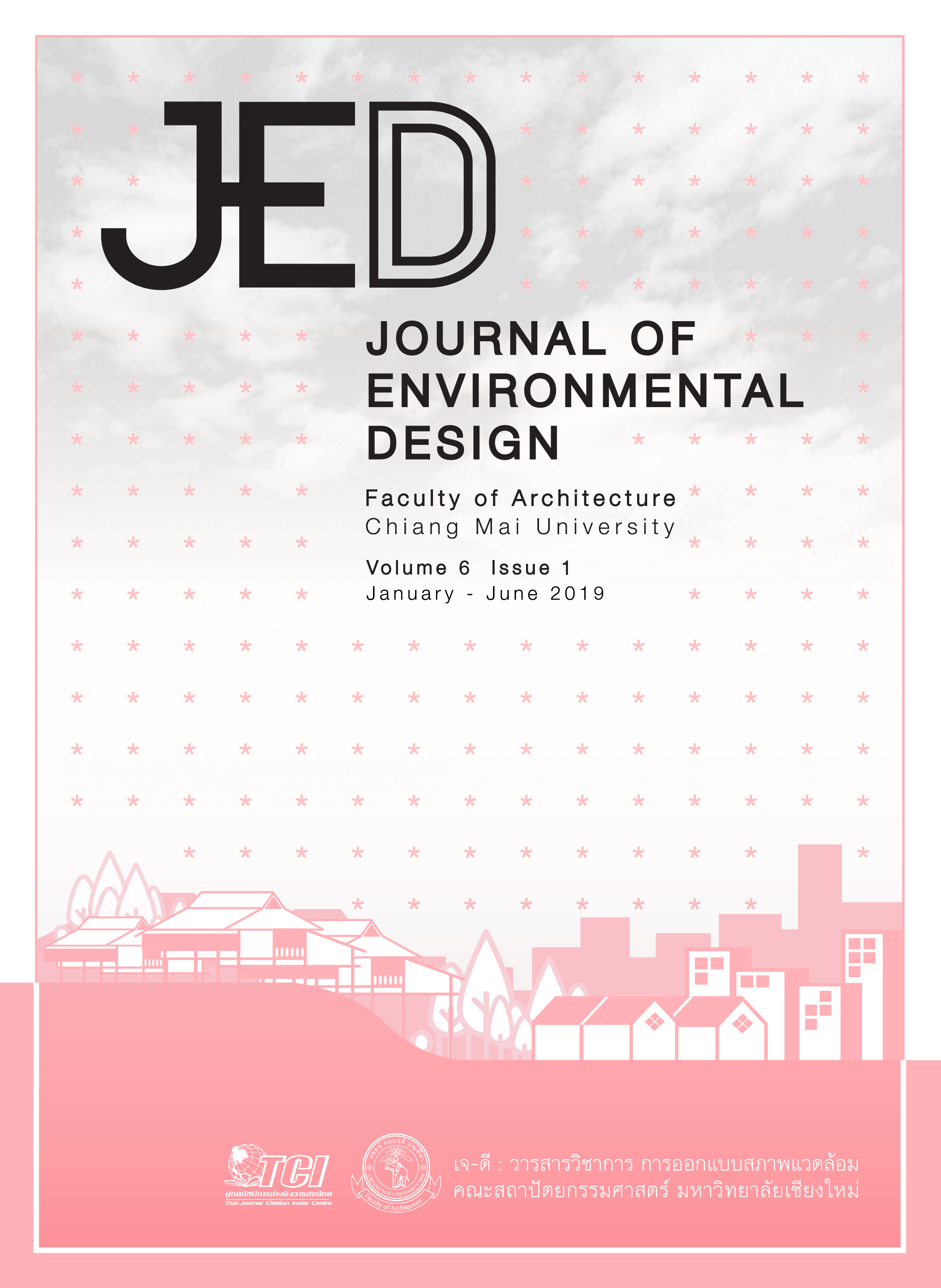Traditional houses of Lavue ethnic group in Mae Cham, Chiangmai province
Traditional Vernacular Dwelling House of Lavue Ethnic Group in Mae Cham, Chiangmai province
Keywords:
Traditional, vernacular architecture, Lawa, Lavue ethnic group, AustroasiaticAbstract
Lavue, the Austro–Asiatic speakers, is regarded as an indigenous ethnic group of mainland Southeast Asia. Lavue people had been inhabited in Southeast Asia earlier than the groups of Thai speaker migrated to this region. This study aims to examine a village of Lavue people in Mae Chaem, Chiang Mai, as a case study because their customs and traditions related to the built environment and vernacular architecture are still conserved well rather than other Lavue villages nearby an urban area. From a fielded survey, this study found that the development of vernacular dwelling house of Lavue can be divided into 3 phases 1) traditional Lavue dwelling house 2) traditional Lavue dwelling house with addition 3) modern Lavue dwelling House. However, only a traditional Lavue dwelling house is discussed in this paper because it is an endangered house. There is only one house of this type that still survive in the village. A qualitative research was used to study the traditional house of Lavue in order to analyze its architectural form, structure, interior space organization, sacred space. This study records an observation, survey the house, interview the house owner and scholars. Finally, this study of traditional Lavue house will provide a contribution for the status of knowledge of vernacular dwelling house of Lavue.
References
Meteorological Department. (2016). Climatological data “Annual weather report” Meteorological Station of Chiang Mai. Bangkok: Meteorological Department.
Panin, O. (1997). Sathapattayakam puentin pak nue prophet ruean teeyu asai. (In Thai) [Vernacular architecture in the north of Thailand]. Bangkok: Siambooks and publications.
Pawarachan, S. (1994). Ruean chonnabot. (In Thai) [Rural house in Thailand]. Chiang Mai: The Office of Arts and Culture, Chiang Mai Rajabhat University.
Prachameeboon, B & Prachameeboon, S. (2016, June 4). Interview. Coordinator of village community, Meachaem, Chiang Mai.
Prachameeboon, T. (2016, June 5). Interview. House’s owner, Mea Chaem, Chiang Mai.
Prachoubmoa, C., et al. (2012). Pritsana wongsakhanayat “Lua”. (In Thai) [Question of lue ethnic group]. Bangkok: Princess Maha Chakri Sirindhorn Anthropology Centre.
Rapoport, A. (1969). House form and culture. Englewood Cliffs: Prentice–Hall.
Ratthikanok, T. (1969). Ngan wijai prawattisat lae manutsayawitthaya rueng Lawa Bo Luang. (In Thai) [History and anthropology of Lawa at Baan Bo Laung]. Chiang Mai: Faculty of Humanities, Chiang Mai University.
Thosaroth, N. & Rathnakul, S. (1996). Saranukrom chatiphan Lawa. (In Thai) [Encyclopedia of Lawa]. Nakhon Pathom: Research Institute for Languages and Cultures of Asia, Mahidol University.
Village Headman. (2016, December 5). Interview. Community leader & village headman, Meachaem, Chiang Mai.




